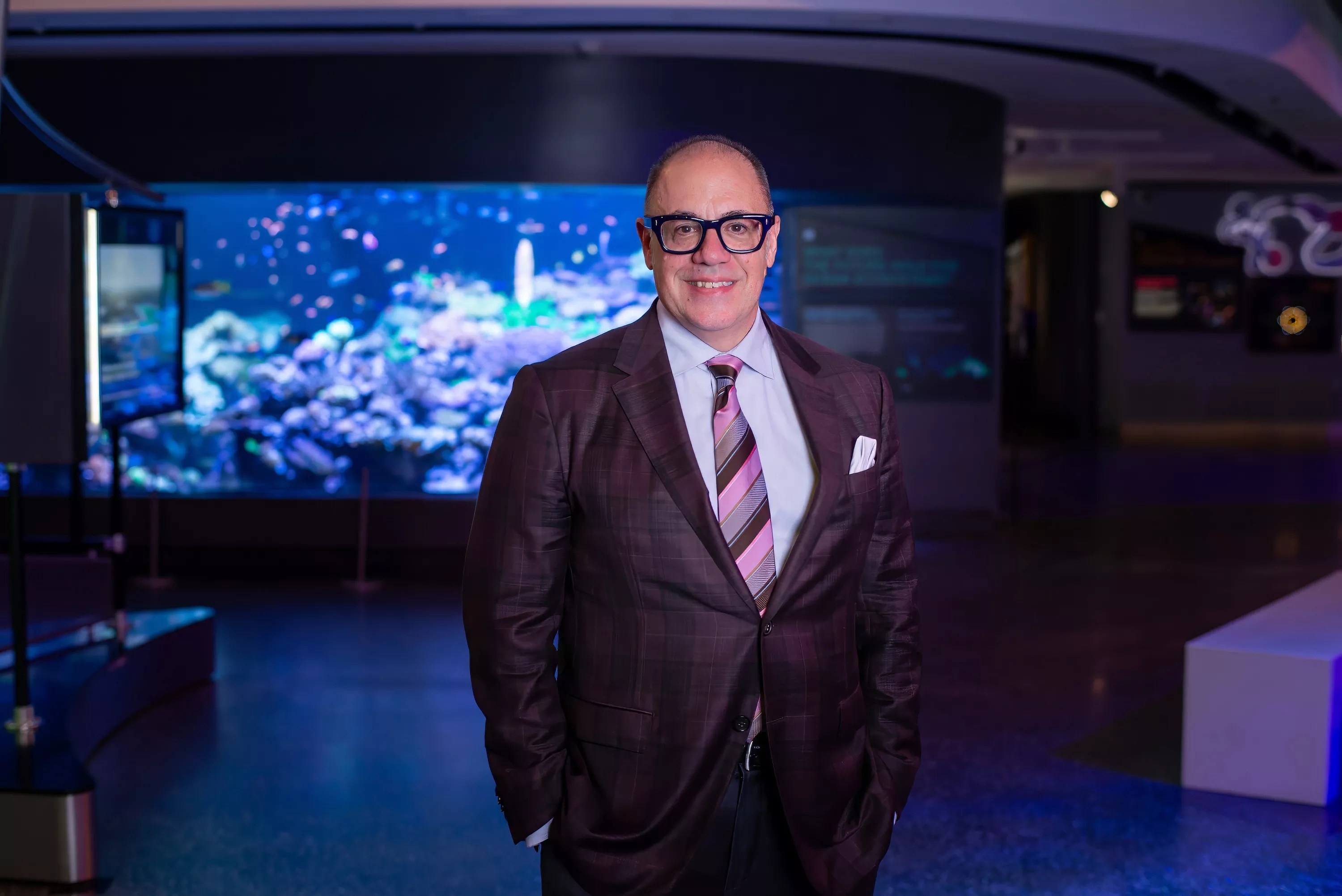
Photo by Ra-haus Fotografie

Audio By Carbonatix
Dr. Douglas Roberts has his head in the stars – really. It’s his job.
As one of our planet’s foremost celestial explorers, Roberts has made significant contributions to the study of star formation and black holes. He’s also led the development of the WorldWide Telescope project, a free platform allowing any earthbound space traveler with a Wi-Fi connection to navigate the Known Universe three-dimensionally from the comfort of their laptop.
But long before Roberts was an esteemed scientist with a Ph.D. in physics, he was a wide-eyed kid feeding his natural-born cosmic awe with episodes of Star Trek and Carl Sagan’s Cosmos.
“For as long as I can remember, I was interested in science and wanted to be a scientist,” he tells New Times. “In elementary school, I would skip recess to do research and write papers on Albert Einstein.”
Of course, science museums played a crucial role in awakening his lifelong scientific curiosity. “I remember going to the great museums of Chicago, the Museum of Science and Industry, Field Museum, and the Adler Planetarium,” he recalls. “In 1976, my family took me to the National Air and Space Museum in Washington, D.C., and when I was 12, they took me to the Kennedy Space Center. I loved seeing all those rockets and imagining where they could take me.”
While those rockets did not take Roberts to Proxima Centauri, they did spark ignition for an epic vocational journey. In the past two decades, he’s spearheaded science education, research, technology, and public engagement initiatives for prestigious institutions like Northwestern University, the Adler Planetarium, and the Fort Worth Museum of Science and History.
As he embarks on his new leadership role as president and CEO of Miami’s Phillip and Patricia Frost Museum of Science this summer, Roberts remains keenly aware of the momentous impact science museums can have on the promising young minds of our future scientists.
“Kids must have fun exploring science, starting with a visit to the museum and continuing their engagement at school and home,” he says. “They need to see how scientific thinking can be used to explore their own homes and neighborhoods and learn that this same way of thinking can help in bigger projects.”
In 2023, with the existential threat of climate change looming on our ever-darkening horizon, cultivating scientific thinking is no longer just important; it’s also urgent.
“Providing opportunities for younger generations to understand what’s happening with our environment and the impact we can all make is critical, along with the role science can play in solving issues both globally and at home,” Roberts says. “It’s important that they see models of what it’s like doing science and feel fulfilled by it. We work together to accomplish what we can’t do alone. Science is hopeful, and my greatest desire is that our guests leave the museum with that sense of hope and purpose.”
Throughout his distinguished career, Roberts has championed the critical role of science visualization and communication in advancing learning experiences. This is paramount when conveying complex scientific ideas in simple terms that children can understand and appreciate.
“Science visualization takes complex scientific data and principles, makes them visual, and, in the best cases, interactive,” he explains. “Visuals are a great tool to get complex information into our heads, and we can start that process of visually understanding data at the museum.”
With Roberts at the helm of the Frost Science Museum, Miami can expect a thrilling new era of visually immersive and interactive programming that’ll coax the science nerd out of anyone.
“I’m a science nerd myself, and I want Frost Science to be a place of exploration for existing and future science nerds in Miami and beyond,” he says. “As a scientist, I want to encourage the South Florida community to connect with science. For some of our younger guests, that could mean working toward a career involving science, technology, engineering, and math. We want guests to be inspired to face our challenges and make a positive impact on our world and environment.”
Roberts’ new appointment at the Frost Science Museum didn’t come without ringing endorsements from Miami’s elected officials.
“On behalf of our County’s three million residents, I’d like to extend my sincere congratulations to Dr. Roberts and welcome him to Miami-Dade,” Miami-Dade County Mayor Daniella Levine Cava said in a statement. “Under Dr. Roberts’ leadership, Frost Science will continue to be one of the great institutions of science and technology.”
And Roberts’ first order of business as president and CEO? It’s reaffirming the museum’s commitment to community engagement in Miami. “In my first three months, I will be listening to members of our community to learn the role they want Frost Science to play in their lives,” he confirms.
“Frost Science is an amazing asset for the residents of Miami-Dade County,” he adds. “I want to ensure we are providing what our community needs for the museum to continue to be a place of inspiration and exploration. This is Miami’s museum, and we want to continue to build on this legacy for generations to come.”
“Above all, I hope guests leave with a positive connection to science and understand the universe is astounding,” he says. “A visit to Frost Science should spark curiosity and motivate our guests to want to explore our world further.”
Phillip and Patricia Frost Museum of Science. 1101 Biscayne Blvd., Miami; 305-434-9600; frostscience.org. Admission costs $22.95 to $32.95; admission is free for children 3 and under and members. Daily 10 a.m. to 6 p.m.